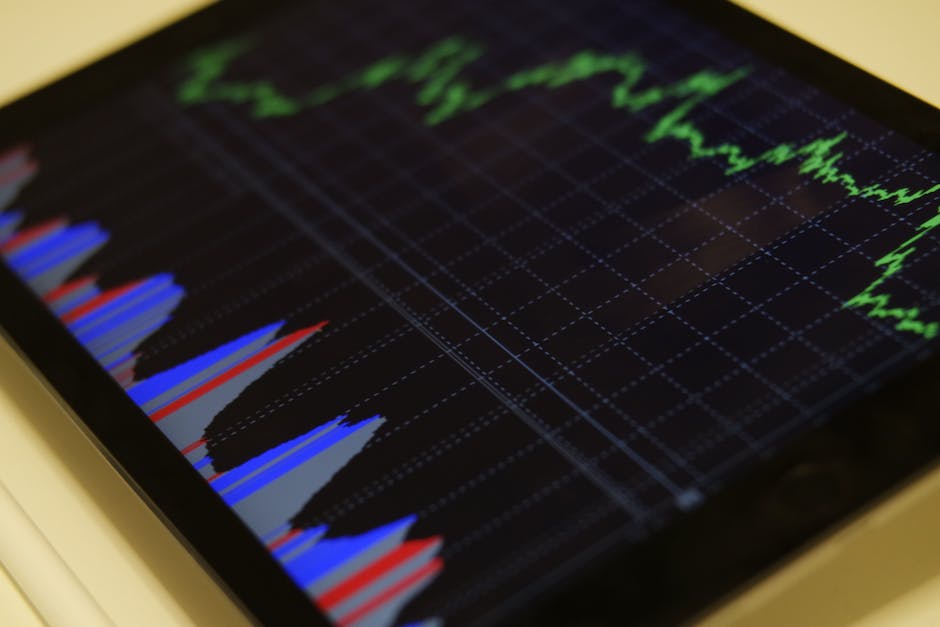Statistics in technology is a powerful tool. It allows us to make sense of the vast amount of data that the tech industry generates on a daily basis. And it’s not just about numbers. Statistics provide insights, inform decisions, and can even predict future trends. In this blog post, we will explore the two main types of statistics: inferential and descriptive, providing a clear understanding of their differences and how they are used in the tech industry.
Understanding these statistical methods is not just for data scientists or statisticians. Anyone working in tech, from software engineers to product managers, can benefit from a basic understanding of these concepts. So, let’s get started!

The Basics – What is Statistics?
Statistics is a branch of mathematics that deals with collecting, analyzing, interpreting, presenting, and organizing data. It’s all about finding patterns and relationships in data, and using those findings to make informed decisions.
In the tech industry, these decisions could relate to anything from improving user experience, optimizing algorithms, to strategic business decisions. The key is that these decisions are not based on hunches or assumptions. They are based on reliable, analyzed data.
Importance of Statistics in Tech
Why are statistics so important in tech? Firstly, the tech industry is a data-rich environment. From user behavior data to system performance metrics, there is a wealth of information available. But raw data is of limited use without the tools to interpret it. That’s where statistics come in.
Statistical techniques allow us to extract meaningful insights from this data. For instance, a product manager might use statistics to understand user behavior and inform product development. A software engineer might use statistical analysis to optimize algorithms. Or a business leader might use statistics to inform strategic decisions.
Understanding the difference between inferential and descriptive statistics is crucial in these contexts. These two types of statistics offer different ways to understand and interpret data, and both have their strengths and limitations. Let’s take a closer look at what they are and how they differ.
Understanding Descriptive Statistics
Descriptive statistics is a branch of statistics that focuses on collecting, summarizing, presenting, and interpreting data. It’s all about providing a detailed summary of the data at hand and organizing it in a way that can be easily understood. In the tech industry, descriptive statistics are used in various ways. For instance, a tech company might use descriptive statistics to analyze user behavior on their website, identifying trends such as the most popular pages or features, average time spent on the site, and more. The goal is to make sense of the data and to provide insights that can help in decision-making.
Just think about it. What if you could understand your users’ behavior or your system’s performance by just looking at a summary of your data? That’s the power of descriptive statistics!
Components of Descriptive Statistics
There are two key components in descriptive statistics: measures of central tendency and measures of dispersion.
Measures of central tendency provide a single value that represents the center of the data. They include the mean (average), median (middle value), and mode (most frequently occurring value). For example, a tech company might calculate the mean time users spend on their site to understand the average user behavior.
On the other hand, measures of dispersion tell us about the spread of our data. They include the range (difference between the highest and lowest value), variance (how much the values differ from the mean), and standard deviation (average distance of each value from the mean). For instance, if a tech company finds that the standard deviation for the time spent on their site is high, it means that user behavior varies a lot, which could be a sign that different users have different needs or preferences.
Advantages and Limitations of Descriptive Statistics
The use of descriptive statistics in the tech industry comes with several advantages. First, it simplifies large amounts of data in a sensible way. Second, it gives a detailed insight into the data, enabling clearer and more informed decision-making. Furthermore, descriptive statistics can be used to present quantitative descriptions in a manageable form and can be used to compare different data sets with ease.
However, there are also limitations to descriptive statistics. For one, it can only describe the basic features of data, but it does not allow us to make conclusions beyond the data we have analyzed or reach conclusions regarding any hypotheses we might have made. Additionally, it can be prone to misuse, especially when the focus is on presenting data in a way that highlights specific findings and ignores others. Therefore, while descriptive statistics provide valuable insights, they must be used judiciously and supplemented by other statistical methods when necessary.
Diving into Inferential Statistics
While descriptive statistics provide a summary of your data as it is, inferential statistics take a step forward. They allow you to make predictions or inferences about a larger population based on a sample of data. In tech, for instance, a software company might use inferential statistics to predict user behavior based on a sample of user data. Interesting, isn’t it?
Think about a tech company testing a new feature on its app. They can’t possibly involve every user in the testing phase, right? This is where inferential statistics shine. They use a representative sample to draw conclusions about the entire user base. It’s like taking a sneak peek into the future!
Key Elements of Inferential Statistics
Now, let’s break down the key elements of inferential statistics. It all starts with the population – the entire group that you want information about. In the tech world, this could be all the users of a particular software.
However, gathering information from the entire population is often impractical, if not impossible. This is where the sample comes in. A sample is a subset of the population that is representative of the whole group. For example, a tech company might select a random group of users to test a new feature.
Then we have hypothesis testing. This is the process of making an assumption about the population based on the sample data, and then testing the validity of that assumption. For instance, a tech company might hypothesize that a new app feature will improve user engagement. They would then use inferential statistics to test this hypothesis based on data collected from the sample.
Advantages and Challenges of Inferential Statistics
One of the main advantages of inferential statistics is that they allow tech companies to make educated guesses about large groups based on smaller samples. This can save time, resources, and can provide insights that might not be apparent from just looking at the raw data. Imagine being able to predict how millions of users will react to a new software update by just studying a few thousand!
However, inferential statistics are not without challenges. The accuracy of your inferences depends heavily on the representativeness of your sample. If the sample isn’t truly representative of the population, the inferences may not hold true. Furthermore, inferential statistics is based on probability, which means there’s always a degree of uncertainty involved. It’s a bit like predicting the weather, isn’t it?
Another challenge in the tech industry is the sheer volume of data. With so much data available, it can be tricky to determine the right sample size and to ensure that it’s representative of the population. But despite these challenges, the insights gained from inferential statistics can be invaluable to tech companies.

Descriptive vs Inferential Statistics – A Comparison
When it comes to understanding the differences between Descriptive and Inferential Statistics, we must consider their unique characteristics and applications in the tech industry. Both offer valuable insights, but their uses differ significantly.
Descriptive Statistics primarily focuses on summarizing and organizing data. It’s like taking a snapshot of what the data currently shows. This type of statistics is commonly used in the initial stages of data analysis, offering a quick overview of the data available. Examples might include calculating the average user age on a social media platform or the most common operating system among a set of devices.
On the other hand, Inferential Statistics goes beyond simply describing data. It uses the available data to make predictions or draw conclusions about a larger population. An example might be predicting future user behavior based on a sample of user data. This extrapolation makes Inferential Statistics particularly valuable in the tech industry, where making informed predictions can have a significant impact on strategy and decision-making.
How to Choose the Right Statistical Method
Choosing between Descriptive and Inferential Statistics is not just about understanding their definitions and differences. It also requires a keen understanding of the project’s goal, the available data, and the nature of the tech project at hand.
Generally, if the goal is to summarize or organize data, Descriptive Statistics is likely the right choice. However, if the aim is to make predictions or infer characteristics about a larger population, Inferential Statistics will be more suitable.
It’s also important to consider the data available. If the data collected represents the entire population of interest, Descriptive Statistics can provide a comprehensive view. But if the data is a sample and we’re interested in making inferences about the larger population, Inferential Statistics becomes necessary.
Lastly, the nature of the tech project plays a crucial role. Some projects may require a combination of both Descriptive and Inferential Statistics. For instance, in a project involving user data analysis, Descriptive Statistics might be used to summarize user demographics, while Inferential Statistics might be applied to predict future user behavior.
Conclusion and Final Takeaways
In conclusion, both Descriptive and Inferential Statistics play a crucial role in the tech industry. Understanding the unique characteristics and applications of each can help you make more informed decisions and carry out more effective data analysis.
Remember, Descriptive Statistics provides a snapshot of what the data currently shows, while Inferential Statistics offers predictions and conclusions about a larger population. Choosing between the two requires a clear understanding of the project’s goal, the available data, and the nature of the tech project.
The importance of these statistics types in tech careers cannot be overstated. As such, continual self-learning and practice are highly recommended for anyone interested in or currently working in the tech industry. So, are you ready to take your statistical knowledge to the next level?
